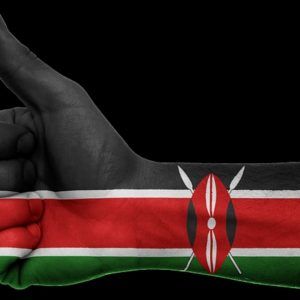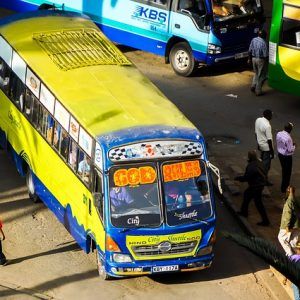By Doris Katheke
A nation in all sense and manner refers to a people who are one. Patriotism: the love that one has for their nation. Although seemingly synonymous, nationalism can be a threat to patriotism, and the death of patriotism is the end of a nation. Kenya is no exemption.
With the changes of regimes, Nyayo to Mkate Nusu to Kamwana, so have circumstances changed and with it a slow death to patriotism. As we stand, deep in debt, the common Mwananchi feels sorry for being a Kenyan and apathy runs deeper. Harambee, the spirit of a united people, has been dead for decades now. Over the years, development has focused on the built environment as per success indexing. This is evidenced in the nature of current master and strategic plans: Vision 2030, Big 4 agenda, and all supporting documents. The people have slowly fostered the chai and kitu kidogo spirit, slowly tearing apart a half-built nation.
As a president, I would work to revive patriotism: a social cause to revive ownership of one’s own nation, its people, and their welfare. Through massive online and physical campaigns, the agenda would remain that of creating inclusivity through public participation so as to awaken the Harambee spirit that once saw massive development in our country. This being that the Vision 2030 has already outlined a master plan and provided some development such as TEAMS fiber optics, an inland container depot, an oil jetty in Kisumu, the Thika super highway as well as the 2010 constitution and its supporting parliamentary acts.
The Big 4 Agenda has further created detailed strategic plans to aid in the achievement of the Vision 2030, going a step further to cater to affordable housing and healthcare needs, food security, and the manufacturing industry. These plans hold a promise for extensive forward movement if adopted and implemented wholeheartedly.
The biggest threat to any plan is a disjointed front in tackling it. The greatest weakness of a team is the lack of coordination. The one weakness that Kenyans have allowed thrive is apathy towards our nation: we view the country as just the government and we the people remain victims to the political injustices so prevalent in the administration. We further go ahead to use this as justification for our own deeds and acts of graft, corruption, and plain right impunity. We have no respect for our law and this in itself is a self-dealt blow of death.
I would, through campaigns, ignite the Kenyan Society for our Economy, Environment, Physical, and History Initiative. Using the bottom-up and top-down approaches, I would engage the public with the intention of accelerating the completion of already existing master and strategic plans. Borrowing from the planning tool PESTE, the initiative understands that technology is very much people-based and therefore centers all strategies around them. The goal is to directly engage the Mwananchi, including them as both actors and stakeholders in national growth. The actual work takes place at the ward level.
SEEPH initiative would be a 7-step plan that includes;
1. Mass civic and judicial education: The breaking down and debating of the 2010 Constitution and already existing master and strategic plans as well as other relevant parliamentary acts and policies with the intention of ensuring the Mwananchi fully understands their niche, power, and role in the nation.
2. Continuous public discourse: A period of time to fully allow the Mwananchi to truly understand the documents. The success indicator will be a willingness, shown through a forward attitude, to engage the respective educator on these things. Also, the Mwananchi needs to be able to make the ideas relevant, be willing to accept or reject certain aspects of these plans because they understand their region in relation to Kenya as a whole.
3. Personalization of plans: The above step allows that the Mwananchi be able to create localized action plans at ward levels. They get to further adjust and thus form-fit national strategic plans to their own personal needs at the ward levels.
4. Finalization of local action plans: Having created a rough idea of what they truly want, this step entails the deployment of town planners as well as other professional technical teams into the barazas to help polish the local action plans. Note, nothing has changed in this case but rather the implementation of national plans and strategies has simply been made to fit the needs of local communities at ward levels. They have understood what is at stake, what the government seeks to achieve and has been able to do, and how they get to aid the rest of the way.
5. Creation of Nyumba 10 Technical groups: Simply emulating the previous Harambee acts, this part allows for the community to volunteer its own workforce who are to be teamed up with the previously deployed professional technical forces to work on developments in their local areas. They understand their respective capabilities and now put them forth to grow and achieve their goals.
6. Mobilization of resources: In support of labour and human resource, this step further prepares the teams to work on their respective plans.
7. Implementation of localized action plans: In a massive nationwide celebration, the implementation is kicked off allowing the 1450 wards to get to work on the strategies that they themselves form-fitted to their own needs. The rest remains a matter of continuous assessment and M&E with revisions and changes made as deemed fit.
Far from being a soft strategy, the initiative aims to unclog the system by ensuring plans are complete before creating new ones. Furthermore, it goes on to create accountability and transparency by way of inclusivity among the public. It fosters healing of previous political injustices and encourages the mass awakening of the people as the sovereign authority. It reduces redundancies, takes out unnecessary expenses and engages everyone in the process. This is true democracy in democracy for democracy.
***
28 year old Doris Katheke Mutua is an unpublished writer, with a knack for the psychological and general lifestyle. She holds a degree from the University of Nairobi in Urban Planning.
Doris has worked at the Lake Basin Development Authorities, an RDA based on the Lake Victoria basin whose intention was to engage the public in different projects and programs to enhance development. It was here that her perspective regarding development was solidified. She has spent the last two years carrying out research on the attitudes and mindsets of the common mwananchi, particularly, the youth of a ghetto kind located in the decaying, unplanned and sprawling outskirts of Nairobi.





